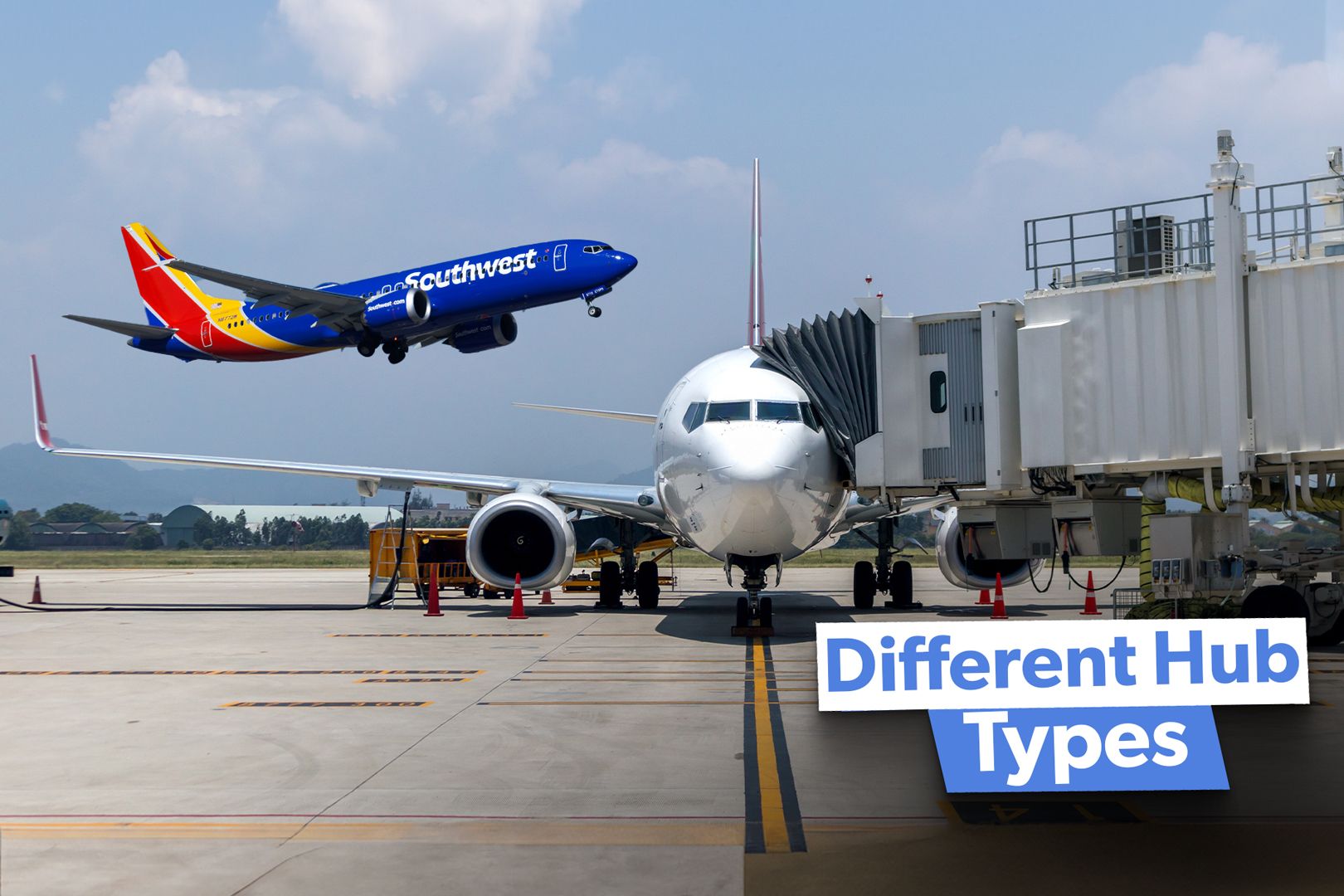Summary Banked hubs streamline connections & offer flexibility. Rolling hubs reduce delays but lower revenue for airlines. Industry experts suggest a hybrid approach for greater efficiency.
The major carriers in the US, such as American Airlines and Delta Air Lines, saw a pronounced shift from the concept of banked hubs around the turn of the millennium. This was done to ease the traffic congestion at the airports. American Airlines reverted to a rolling hub at the Dallas/Fort Worth International Airport (DFW) airport , and Chicago O'Hare International Airport (ORD) .

It was hoped that introducing a rolling hub would cut down on the takeoff queues at the airport, aiding to reduce delays. However, terms such as “rolling hubs” and “banked hubs” are not well-known in the public sphere. So, we will take a look at what they really mean.
Banked hubs Before Covid-19, the hub and spoke model had more or less been buried. Delta Air Lines had pioneered the hub and spoke model around the mid 20th century to optimize network coverage. Under the hub-and-spoke concept , airlines choose the hub airport as their central transfer point.
International carriers such as Cathay Pacific and Singapore Airlines have a single-hub airport. If flights originate at a carrier’s “spoke airports,” i.e.
, the airports in the various cities in the carrier’s network, the passengers are first transferred to the hub airports. So, a passenger wanting to fly from Kathmandu to Laos on Singapore Airlines will connect in Singapore. Similarly, passengers wishing to fly from Delhi to Heathrow on Emirates will change planes in Dubai.
Thus, the airline operating within the hub-and-spoke model provides “a far larger number of indirect connections with a transfer stop at the hub” instead of maintaining many connections between different cities. A research paper published in the Journal of Air Transport explains the concept of a banked hub within the larger framework of the hub and spoke model: “In this system, a so-called bank can ideally be defined by a wave of flight arrivals at the hub from numerous spoke airports during a limited timeframe. All aircraft utilized are on ground for a certain period of time to allow for the transit of passengers between flights.
Airports have what is known as a specific minimum connecting time (MCT). The authors say that MCT defines: " the minimum period necessary to allow transfers from all arrivals to all departures and thus to ensure the full coverage of potential passenger itineraries. Once all transfers have been finalized, the aircraft leave the hub again within a limited period of time causing a second wave: the flight departures.
” Let’s take a look at the advantages and disadvantages of a banked hub for airlines. Advantages Disadvantages Short connection times for passengers. Need to assemble greater resources to handle numerous incoming aircraft during activity peaks.
Airlines don’t have to operate numerous indirect flights in their “spoke” airports. Flight delays resulted from several aircraft on the ground. Maximizes passenger transfer options.
Aircraft waiting to bank at their hubs from spoken cities can lead to inefficient aircraft utilization. How “rolling hubs” got traction after the turn of the millenium A rolling hub, on the other hand, was introduced after airlines debanked their hubs. The idea behind a rolling hub was to ensure that aircraft congestion in a hub and spoke model could be avoided.
A report published in The Washington Times exemplifies how airlines chose the “rolling hub” concept after 9/11 and how this was a major shift from strategies used by major airlines previously: “ Before the September 11 attacks and a slumping economy created record losses, most big airlines clustered their flights around peak flying hours at “hub” airports, which roughly follow the morning and evening rush hours. A hub is a large airport where flights are clustered around peak times and sent out in “spokes,” or connections to other airports. Washington Times further exposited on how a rolling hub might be able to help airlines make more money: "To arrange the flights in close sequence, the airlines often leave planes waiting on standby until their departure times arrive.
Under the rolling hub concept, airlines try to reduce waiting time for airplanes and return them to the air as promptly as possible to cut costs and generate more revenue. “ Advantages Disadvantages Shorter delays as aircraft congestion isn’t high. It doesn't work as efficiently in smaller hubs.
Maximum use of airline resources (such as crew, aircraft, and gates). Lower revenue potential for airlines. The most prominent problem with a rolling hub is its lower potential for carriers.
This is why we are seeing more airlines resorting to banked hubs. According to johnlocke.org : “While rolling hubs minimize airline costs, they also will reduce airline revenue.
Passengers generally want to get to their final destination sooner rather than later, and there’s a lot of later involved in a rolling hub, exactly because flights are spread out during the day. People aren’t willing to pay as much for such longer itineraries.” The open door: A hybrid approach? Industry experts believe that a hybrid approach is possible, which could use “a combination of banking for key times and routes and a more rolling structure for others.
” Some people cite Dubai as an example. It has some heavy banks, which can be testified by people who have been “circling and circling forever” around the airport, even at midnight. On the upside, there were additional flights peppered through emptier times.
.



















